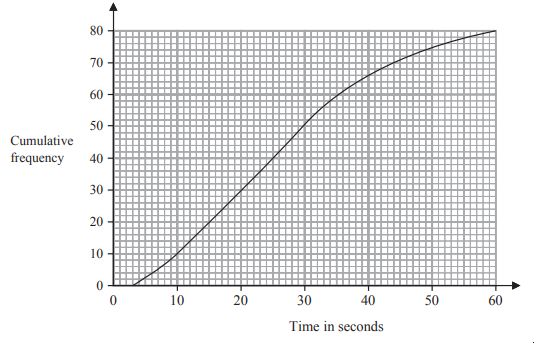The table shows information about the speeds of lorries.
Speed ( | Frequency |
Complete the cumulative frequency table for this information.
Speed ( | Cumulative frequency |
| |
| |
| |
| |
|
On the grid, draw a cumulative frequency graph for your table.

Find an estimate for the number of lorries with a speed of more than km/h.
Did this page help you?































